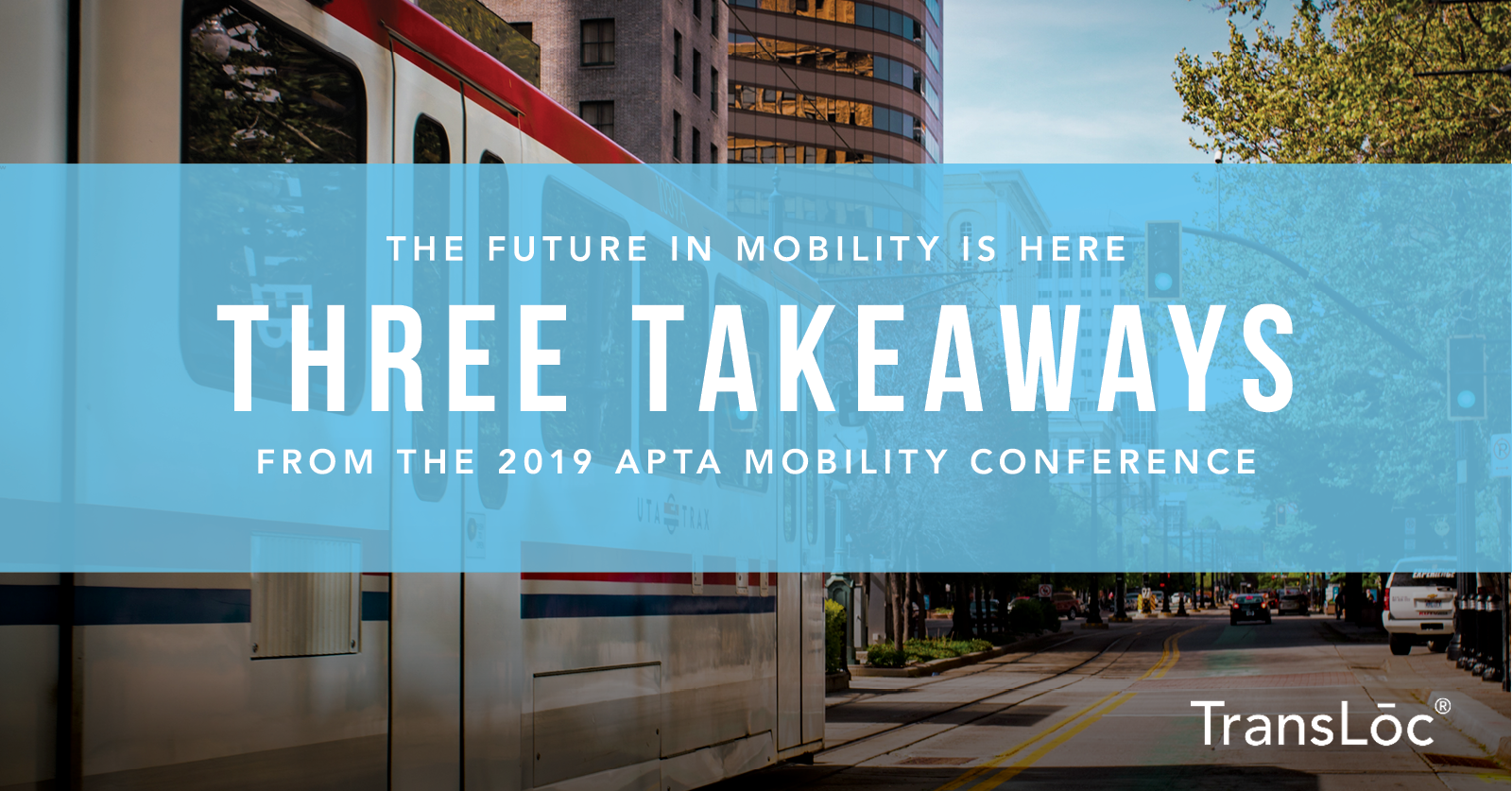
Technology and partnerships are critical to making access to jobs, healthcare, and entertainment available to anyone who needs it.
At the APTA Mobility Conference, there were numerous breakout sessions and keynotes outlining how to redefine the future of the transit industry and the freedom it produces for their communities at-large. Here are the top 3 takeaways that public transit systems should make a priority when it comes to the future of mobility.
The Future is Now
It doesn’t matter what side of the fence you are on, there is no question that technology has impacted how people in your communities are getting around.
From Uber and Lyft to electric bikes and scooters, the one thing that is undeniable is that people want to go where they want when they want, and the FTA wants to make that process easier.
The Integrated Mobility Innovation (IMI) Program has up to $19 million available for 2019 solicitation for agencies that demonstrate “partnerships and technologies to enhance public transportation effectiveness, increase efficiency, expand quality, promote safety and improve the traveler experience.”
Matthew Welbes, the Executive Director of the FTA, stated that the mission for every transit system, no matter how large or small should be, “accessible, dependable, and easy to use.” Welbes went on to warn transit systems who fail to make their rider experience more seamless, “If it is undependable, inconvenient, or burdensome in any way that’s a major barrier, and may be a disincentive to using that system.”
Every innovative transit system must deliver a rider experience, where their customers can simply go from point A to point B without any hiccups.
Should There Be More Focus On Fixed Routes?
There’s been a lot of discussion about the best way to address mobility. Should agencies spend more time improving fixed routes or should they consider alternative forms of transportation?
What’s the answer? Transit is not a one-size-fits-all solution. Taking the linear approach takes away a lot of the flexibility available to agencies to better serve their riders.
Fixed routes will always play an integral role in our transit systems, however, there are instances where other modes would be more effective. Vincent Valdes, the FTA Associate Administrator for Research, Demonstration & Innovation, said during the FTA Update session that agencies’ on-demand transit options and automated tech should interact.
By agencies identifying and replacing under-performing routes with more efficient mobility options, it opens more opportunities for their riders.
Transit systems across the country are struggling to efficiently provide quality and service to riders in under or unserved areas, and leveraging technology will help to achieve more efficient movement
Private-Public Partnerships
The phrase “no man is an island” is true in transit as it is any other industry.
The best way to combat declining ridership is for transit systems to run more efficiently by providing a quality rider experience through partnerships.
There is a negative perception amongst riders across the country that public transit is too slow or unreliable and public-private partnerships are the best way to overcome that narrative. Agencies and private mobility partners working together instead of going up against each other is the best way to provide a consistent and quality experience for riders because it allows everyone to do what they do best.
Agencies are able to offer more people the freedom of mobility and accessibility to anyone in their community who do not have the means to purchase a vehicle to get to work or school. TNCs and private entities are able to make the transportation process for those riders more reliable and simpler.
As transit leaders, the decisions we make today will have a direct impact on where we are tomorrow. Now isn’t the time to wait around and see what happens in the future. If we want to make public transit more appealing to the general public, we are going to have to acknowledge the demands of our riders have changed and meet those demands.